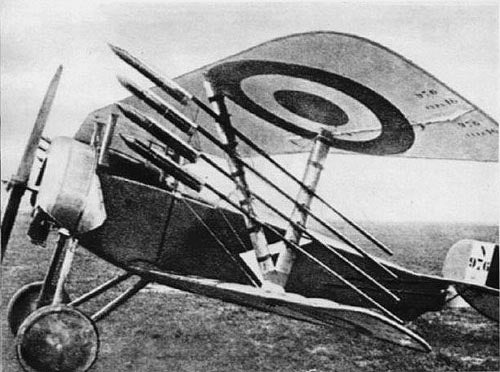Technological Inventions during WWI
Tanks:
 In 1914, when the "war of movement" known as World War One began, the most common type of weapon used by all sides was machine guns. However, with machine guns reinforcing massed rifle fire from the defending trenches, attackers were mowed down by the thousands before they could even get to the other side. To this problem, came out a solution, but it wasn't anything like a machine gun because it came in the form of an automobile. It was a heavily armored vehicle. The first British Tank called The British Mark I, was designed in 1915 and was first used in the Battle of Somme in September of 1916. After the British, the French also followed with Renault FT. The siege engines of the tanks were able to protect many troops.
In 1914, when the "war of movement" known as World War One began, the most common type of weapon used by all sides was machine guns. However, with machine guns reinforcing massed rifle fire from the defending trenches, attackers were mowed down by the thousands before they could even get to the other side. To this problem, came out a solution, but it wasn't anything like a machine gun because it came in the form of an automobile. It was a heavily armored vehicle. The first British Tank called The British Mark I, was designed in 1915 and was first used in the Battle of Somme in September of 1916. After the British, the French also followed with Renault FT. The siege engines of the tanks were able to protect many troops.
 Poison Gas:
Poison Gas:
Poison Gas was used by both sides during the Great War. The Germans made a large-scale attack using chemical weapons with Gas attacks on the Russians positions on January 31, 1915, during the Battle of Bolimov, but according to an article,"Germans introduce poison gas" on history.com, "because of the cold weather, most of the gas froze". The first successful use of chemical weapons occurred on April 22, 1915, near Ypres, when the Germans sprayed chlorine gas from large cylinders towards trenches held by French colonial troops. The defenders fled, but typically for the First World War, this didn’t yield a decisive result: the Germans were slow to follow up with infantry attacks, the gas dissipated, and the Allied defenses were restored. Before long, of course, the Allies were using poison gas too, and over the course of the war both sides resorted to increasingly insidious compounds to beat gas masks, another new invention; thus the overall result was a huge increase in misery for not much change in the strategic situation.
 Flamethrowers:
Flamethrowers:
The Chinese used weapons that hurled flaming material in the medieval period, the first design for a modern flamethrower was submitted to the German Army by Richard Fiedler in 1901, and the devices were tested by the Germans with an experimental detachment in 1911. Their true potential was only realized during trench warfare, however. After a massed assault on enemy lines, it wasn’t uncommon for enemy soldiers to hole up in bunkers and dugouts hollowed into the side of the trenches. Unlike grenades, flamethrowers could “neutralize” (burn alive) enemy soldiers in these confined spaces without inflicting structural damage. The flamethrower was first used by German troops near Verdun in February 1915.
 Tracer Bullets:
Tracer Bullets:
While the Great War involved a lot of futile activity, fighting at night was especially unproductive because there was no way to see where you were shooting. Night combat was made somewhat easier by the British invention of tracer bullets—rounds which emitted small amounts of flammable material that left a phosphorescent trail. The first attempt, in 1915, wasn’t actually that useful, as the trail was “erratic” and limited to 100 meters, but the second tracer model developed in 1916, the .303 SPG Mark VIIG, emitted a regular bright green-white trail and was successful.Pilot-less Drone:
The first pilotless drone was developed for the U.S. Navy in 1916 and 1917 by two inventors, Elmer Sperry and Peter Hewitt, who originally designed it as an unmanned aerial bomb, essentially a prototype cruise missile. Measuring just 18.5 feet across, with a 12-horsepower motor, the Hewitt-Sperry Automatic Aircraft weighed 175 pounds and was stabilized and directed with gyroscopes and a barometer to determine altitude. The first unmanned flight in history occurred on Long Island on March 6, 1918. In the end, the targeting technique point and fly was too imprecise for it to be useful against ships during the war. Further development, by attempting to integrate remote radio control, continued for several years after the war, until the Navy lost interest in 1925.
Sources:
http://www.history.com/this-day-in-history/germans-introduce-poison-gas
http://www.history.com/this-day-in-history/first-tank-produced
http://www.historylearningsite.co.uk/world-war-one/the-western-front-in-world-war-one/tanks-and-world-war-one/
http://www.smithsonianmag.com/ist/?next=/arts-culture/unmanned-drones-have-been-around-since-world-war-i-16055939/
https://infogr.am/harashvivek_1393537750

This is a well-researched post that includes a lot of useeful information about new weapons technology during the WWI era.
ReplyDeleteAnother weapon that made a major debut is the machine gun. Although some very crude machine guns were used during the civil war, it wasn't until WWI that there was the first major use of the Maxim gun. Because many were not used to the intense firepower, there were apalling casualties. Their ability to mow down soldiers by the hundreds each minute contributed to the development of trench warfare for protection.
source: http://www.historylearningsite.co.uk/world-war-one/the-western-front-in-world-war-one/machine-guns/
This is a well-researched post that includes a lot of useeful information about new weapons technology during the WWI era.
ReplyDeleteAnother weapon that made a major debut is the machine gun. Although some very crude machine guns were used during the civil war, it wasn't until WWI that there was the first major use of the Maxim gun. Because many were not used to the intense firepower, there were apalling casualties. Their ability to mow down soldiers by the hundreds each minute contributed to the development of trench warfare for protection.
source: http://www.historylearningsite.co.uk/world-war-one/the-western-front-in-world-war-one/machine-guns/